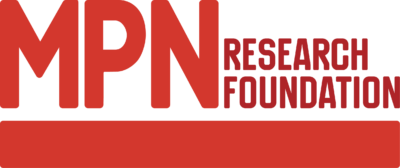Speeding Up the Discovery of Drugs
By John Tozzi on November 29, 2012
When Scott Johnson read an article about a potential breakthrough that restored nerve function in mice with multiple sclerosis, he assumed it would soon be turned into a treatment. That was in 2001. Johnson, who was diagnosed with MS at age 20 in 1976, is still waiting.
A Silicon Valley entrepreneur who has led startups in areas as diverse as food processing and simulated helicopter flights, Johnson founded the Myelin Repair Foundation in 2002 with the goal of halving the time it takes to develop new MS treatments. Now he’s part of a growing movement to fix the messy, uncoordinated way new medicines are created. “I realized that it was literally a totally dysfunctional system,” says Johnson. “It’s not surprising no drugs come out.”
The distance between a scientific discovery and a commercial treatment is known in the drug industry as the “valley of death,” and that’s where most medical innovations end up. For every 5,000 to 10,000 potential treatments discovered in the lab, only one makes it to market, according to the Pharmaceutical Research and Manufacturers of America (PhRMA), the drug industry lobby. And while total spending on research and development by the industry and the National Institutes of Health has increased from about $50.3 billion in 2001 to $80.4 billion in 2011, according to PhRMA data, the number of new drugs approved each year has remained roughly constant at 20 to 30.
“The challenge in medical research is that there ultimately is no one in charge,” says Margaret Anderson, executive director of FasterCures, a Washington nonprofit trying to speed up medical breakthroughs. “It’s not like building the atomic bomb or mapping the genome, those big scientific projects where there was one goal everybody’s trying to get to.”
Johnson wants the Myelin Repair Foundation, which has raised $45 million since 2004, to be in charge of finding treatments that could reverse MS by repairing the lining that protects nerve cells in the brain and spinal cord. Instead of funding disparate studies and waiting for researchers to publish results months or years later, the Saratoga (Calif.)-based foundation coordinates more than 40 researchers in nine labs, who share their findings immediately. To date, Johnson’s collaborative model has produced more than 100 scientific papers and seven U.S. patents.
The foundation set up its own lab in Sunnyvale, Calif., last December to put discoveries through more rigorous tests. That can mean replicating a research experiment that initially involved 10 mice with a much larger sample of 75, in the hopes of demonstrating that the original study wasn’t a fluke. Johnson says he wants results robust enough to deliver to drug companies “on a silver platter.”
NASA has consulted the Myelin Repair Foundation for ways to improve its own research. “In our world, we’re trying to flatten the same process,” says Dr. Jeffrey Davis, director of NASA’s Human Health and Performance division, who several years ago invited Johnson to speak to his staff.
Treatments that reverse the course of MS, rather than just easing the effects of the disease, are too difficult for many companies to pursue, says Dr. Alfred Sandrock, an adviser to the foundation who is chief medical officer of Biogen Idec (BIIB), the leading maker of MS drugs. “They’re trying to repair the brain,” he says. “That’s never been done before.”
When Johnson started his foundation, he was told myelin repair treatments were at least 30 years away. Today researchers at the Cleveland Clinic are recruiting patients for a clinical trial of one potential treatment that grew out of studies Johnson’s center helped fund.
Other medical foundations are seeing results from their efforts to shepherd promising treatments through the valley of death. In January the Food and Drug Administration approved a new cystic fibrosis drug from Vertex Pharmaceuticals (VRTX) that was supported with $75 million in research funding from the Cystic Fibrosis Foundation. A year ago the National Institutes of Health in Bethesda, Md., established a center to accelerate drug development, while in Cleveland, University Hospitals Case Medical Center launched a $250 million project this year to help physician researchers move their discoveries toward commercialization.
Change can’t come fast enough for those with intractable diseases. Chicago businessman Robert Rosen started the MPN Research Foundation to fund research for the family of blood cancers known as myeloproliferative neoplasms after he was diagnosed 15 years ago. Starting in 2005, his group gave three scientists at different labs $2.5 million over three years to commercialize genetic treatments known as JAK2 inhibitors. A tissue bank at the Mayo Clinic the group supported was used to test several MPN drugs in the pipeline, including one that was approved last year, a pace Rosen calls “the speed of light” for drug development. “I thought we’d have all these diseases fixed in my lifetime, and then I thought it would be fixed in my children’s lifetime,” Rosen says. “And now I don’t know anymore.”
The bottom line: Despite a huge R&D boost, pharma produces only 20 to 30 new drugs a year. A California entrepreneur aims to raise its output.
Tozzi is a reporter for Bloomberg Businessweek in New York.

